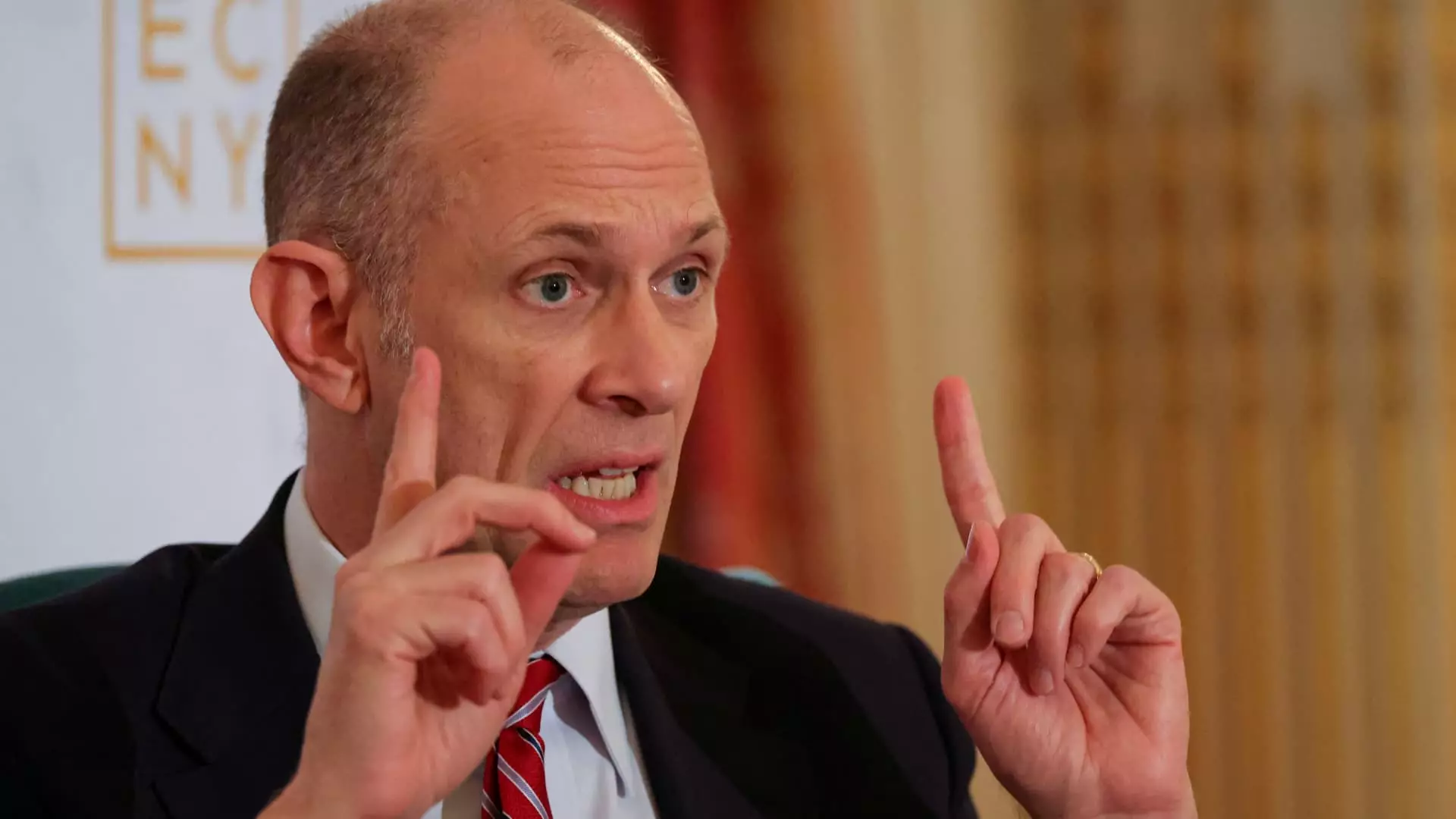At the core of today’s monetary decision-making lies a paradox of economic signals—mixed indicators that challenge the straightforward path to lowering interest rates. Federal Reserve President Austan Goolsbee’s latest comments encapsulate this intricate balancing act. While some interpret the recent inflation reports as a sign that the economy is cooling, others see warning signs that inflationary pressures, particularly in services, remain stubbornly high. This ambiguous economic landscape fosters genuine hesitation within the Fed, highlighting that policymaking is no longer a matter of simple reactions but a strategic navigation through uncertain waters.
These conflicting signals are an inevitable consequence of a post-pandemic economy still resetting. The July consumer price index performing mostly in line with expectations, yet the core rate nudging above forecasts, hints at underlying inflationary forces that may not diminish as quickly as hoped. Simultaneously, the surprising surge in producer prices suggests supply chain pressures and tariffs could be beginning to feed into the broader economy, complicating the Fed’s efforts to engineer a soft landing. Far from a clear-cut scenario, these data points serve as caution flags, urging policymakers to adopt a measured approach rather than rushing to cut rates prematurely.
The Power of Perception: Markets, Expectations, and the Role of Data
Financial markets react swiftly to each new piece of economic information, and their expectations heavily influence the Fed’s decisions. Currently, markets are fairly certain that a September rate cut is imminent—by about 25 basis points—reflecting a consensus that the economy needs some relief from the higher borrowing costs implemented over the past year. Yet, underlying doubts persist. Investors and analysts are wary of overestimating the strength of the economy’s resilience, especially given the nuanced inflation trajectory.
Goolsbee’s call for additional data before decisively lowering rates reveals an awareness that premature easing could undermine credibility and prolong inflationary pressures. The Fed’s cautious stance underscores a broader understanding: policy is a game of patience, and the economic data must unambiguously signal that the inflation peak has passed. The ongoing debate over a second and third rate cuts in subsequent months further emphasizes the importance of each economic report in shaping future expectations. This deliberate approach underscores that monetary policy is ultimately about managing perceptions as much as about responding to quantitative data.
The Tariffs and Global Dynamics: Shadow Play on U.S. Inflation
A critical facet complicating the Fed’s decision-making is the influence of tariffs—an economic instrument used by the U.S. government to address trade concerns. President Donald Trump’s tariff policies, initially intended as negotiation tools, now cast a long shadow over inflation data. While the impact of tariffs on prices is still being parsed by economists, early signs suggest they are gradually making their way into consumer prices and wholesale costs.
This uncertainty is significant because it raises the question of whether inflation pressures are transitory or embedded within the fabric of the economy. If tariffs are indeed contributing to higher prices, then the current inflation figures might not follow the typical path of normalization—posing a risk that the Fed could be underestimating the persistence of inflationary forces. Goolsbee’s methodical stance on waiting for more convincing data indicates a recognition that the economic environment cannot be simplified into a straightforward narrative; rather, it requires nuanced analysis of both domestic and global factors.
Strategic Patience: A Sign of Strength or Caution?
In essence, the Fed’s current approach reflects strategic patience rather than indecision. By emphasizing the need for more conclusive data, policymakers demonstrate a commitment to data-driven decision-making that prioritizes economic stability over hasty reactions. This delay could be perceived as a sign of prudence—acknowledging that both overly aggressive rate cuts and unwarranted hikes could destabilize the recovery.
Furthermore, the market’s anticipation of future rate cuts reveals an implicit confidence in the Fed’s eventual easing cycle—but only if inflation continues to moderate. The careful calibration of policy signals, therefore, indicates a desire to maintain balance: supporting growth while preventing inflation from spiraling out of control. Such an approach might even bolster long-term confidence in the U.S. economy by showcasing the central bank’s independence and its focus on rigorous analysis.
In summation, the cautious stance articulated by Austan Goolsbee underscores the importance of patience and precision in monetary policy. It is a reminder that economic recovery is an intricate puzzle—one that requires not only hard data but also a nuanced understanding of global influences, market psychology, and long-term stability. The coming months will test whether the Federal Reserve’s strategic restraint will pave the way for sustainable growth or whether premature assumptions could accelerate volatility. Either way, this period exemplifies the delicate art of central banking in an era of unprecedented uncertainty.

